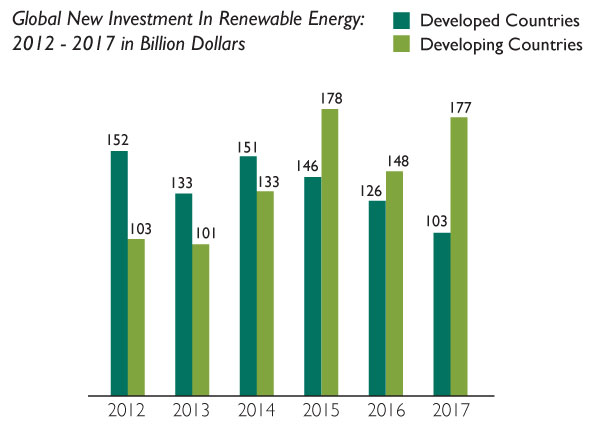- Renewable Energy
What is Renewable Energy?
Energy exists freely in nature. Some of it exists infinitely (never run out, called RENEWABLE), and the rest have finite amounts (they took millions of years to form, and will run out one day, called NON-RENEWABLE)
With this in mind, it is a lot easier to lay any type of energy source in its right place. Let’s look at these types of energy in the diagram below:
You will notice that water, wind, sun, and biomass (vegetation) are all available naturally. Humans did not create or manufacture them. The others do not exist by themselves — they were extracted in some way from nature by humans. Renewable energy resources are always available to be harnessed. They will not run out. That is why some people call it Green Energy.
TIP
Approximately 20% of electricity produced globally in 2009 came from renewable sources. Out of this, hydropower accounted for about 16%.
In 2012, 9% of the energy consumed in the USA came from renewable sources. That means the USA depends a lot on non-renewable sources. 30% of the energy from renewable sources came from hydropower, while biomass, biofuels, and wood, together accounted for about 49%. —Source: USEIA, Monthly Energy Review, April 2013
Developing countries continue to invest more in renewable energy. The diagram below shows the approximate amounts of investment in the sector since 2012.
Illustration of Global Renewable Energy Investment. Source: UN Environment, Bloomberg New Energy Finance. Global Trends in Renewable Energy Investment 2018, http://www.fs-unep-centre.org
When can energy be called ‘Renewable’?
- When its source cannot run out (like the sun) or can easily be replaced (like wood, as we can plant trees to use for energy).
- When their sources are carbon neutral. That means they do not produce carbon compounds (such as other greenhouse gases).
- When they do not pollute the environment (air, land, or water)
Renewable energy includes Biomass, Wind, Hydro-power, Geothermal, and Solar sources. Renewable energy can be converted to electricity, which is stored and transported to our homes for use. In this lesson, we shall take a closer look at how renewable energy is converted into electricity.
